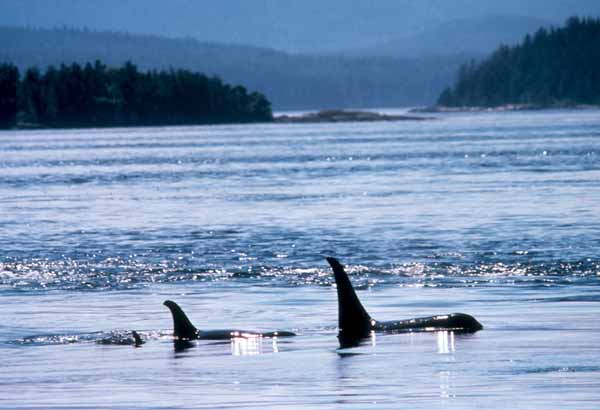Sexual Maturity
Many aspects of killer whale reproduction are not known because they are difficult to study in the wild. Much of what we know about killer whale reproduction comes from studies of killer whales in marine zoological parks.

Depending on the geographic area studied, females are estimated to become sexually mature when they reach about 4.6 to 5.4 m (15 to 18 ft.) in length, which corresponds to ages between 7 to 16 years.
Age at first estrus for 1st-generation SeaWorld killer whales was calculated as 7.5 ± 0.3 years (median = 7.4, range: 5.7-8.5 years, n = 9). Total body length at 1st estrus was 483.7 ± 10.5 cm (median = 485, range: 435-523 cm).
Depending on the ecotype, males become sexually mature when they reach body lengths ranging from 5.2 to 6.4 m (17 to 21 ft.) in length, which corresponds to ages between 10 to 17.5 years (an average of about 15 years).
Based on serum testosterone concentrations, killer whale males in zoological parks (mainly Icelandic in origin) reached puberty from 8 to 12 years of age at 4.9 m (16 ft.) and were sexually mature from 13 years of age and greater than 5.5 m (18 ft.) in length.
In males, dorsal fin growth is probably a secondary sex characteristic.
- Captive studies demonstrate that dorsal fin height to length ratio of 1.4 was associated with sexual maturity in wild males, but it has been demonstrated that males can reach this ratio 1 to 2 years prior to reaching sexual maturation.
- At SeaWorld one male successfully mated at about 8 years of age, but in the wild, social factors greatly influence a male's breeding success. Male killer whales in the wild may not successfully reproduce until they are much older, larger, and able to compete with other males.
Female killer whales exhibit reproductive senesense (eg. menopause). Resident female killer whales in the north Pacific have not been known to reproduce after 46 years of age, and 50% of the females do not reproduce after 38 years of age.

Mating Activity
Females come into estrus several times during the year.
- Observations of females in zoological parks indicate that killer whales undergo periods of multiple estrous cycling (polyestrus), interspersed with periods of noncycling. On average, females may have four estrous cycles during one polyestrus period. This period is highly variable, as is the period of noncycling, both for one whale over time, and between whales.
- Killer whales are polygamous: they mate with several partners.




